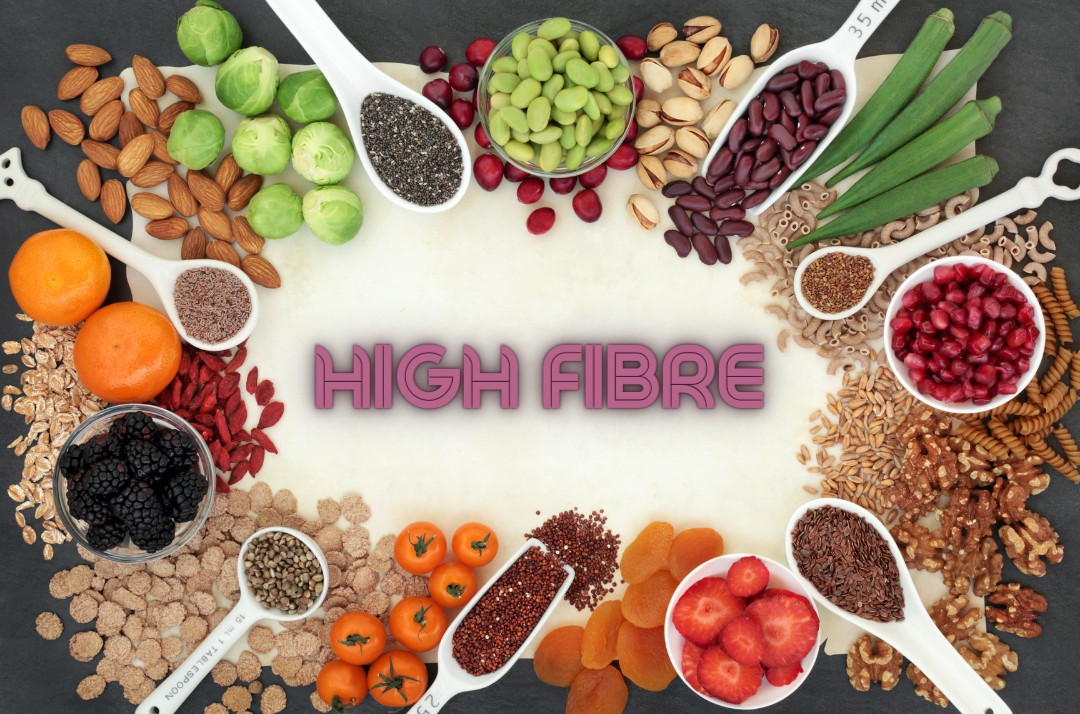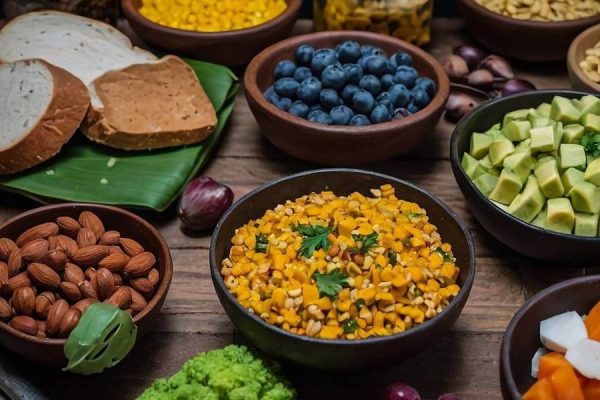Comments (0)
Are You Getting Enough Fibre? Know Why Fibre-diet Matters
Fibre is an essential nutrient that is crucial for maintaining a healthy body. However, many people need to consume more fibre in their food. In this blog, we’ll explore the benefits of Fibre and provide tips for incorporating fibre-rich foods into your diet.
Fibre

A high-fibre diet includes adequate amounts of foods that contain fibre for better digestive and heart health. Fibre is found in plant-based foods, including fruits and vegetables. It’s also found in whole grains, legumes, nuts, and seeds. Fibre is essential to include in a healthy diet as it offers numerous health benefits. So, here are some critical points to note, for a fibre-rich diet:
Digestive Health
Fibre-rich food promotes regular bowel movements, prevents constipation, and maintains a healthy digestive system.
Weight Management
High-fibre foods help you feel fuller for longer. Thus, assisting in weight management and preventing overeating.
Heart Health with Fibre
A high-fibre diet can help reduce the risk of heart disease by lowering cholesterol levels.
Blood Sugar Control
Fibre slows down the process of sugar absorption into the bloodstream. Thus, helping regulate blood sugar levels and reducing the risk of developing type 2 diabetes.
Nutrient Absorption
Consuming fibre-rich foods can enhance nutrient absorption and improve nutrient utilisation in the body.
Types of Fibre
Fibre is a type of carbohydrate commonly and abundantly found in plant-based foods. There are two kinds of Fibre, one is Soluble fibre, and the other is insoluble fibre. Soluble fibre dissolves in the water, forming a gel-like substance in the digestive system. In contrast, insoluble Fibre can not dissolve in water.
Benefits of Fibre
Indian food incorporates Fibre into the daily diet. One example is the staple Indian thali. It comprises vegetables, lentils, roti/ rice and salad. According to the Indian Food Corporation, Indian food has fibre, and the benefits are numerous, including:
- Promoting digestive health
- Lowering cholesterol levels
- Controlling blood sugar levels
- Maintaining healthy weight
- Lessening the risk of certain diseases like Heart disease, diabetes, and some types of cancer
Now, let’s talk about fibre-rich foods that benefit your health.
How To Incorporate Fibre For A Healthier Body
You must include fibre in your diet to maintain good digestive health and overall wellness. So, here are some tips on how to incorporate fibre into your diet and attain better health :
Eat more Fibre-rich fruits and vegetables.
Fruits and vegetables can easily be incorporated into your meals. In addition, try adding a variety of colourful fruits and vegetables to your diet, such as berries, apples, oranges, broccoli, spinach, and carrots.
Choose whole grains based on Fibre.
Brown rice, quinoa, whole wheat or multigrain roti/bread contain fibre. Likewise, they offer more nutrients than refined grains. So, try swapping refined grains for whole grains in your meals to increase your fibre intake.
Snack on Fibre nuts and seeds
Almonds, walnuts, chia seeds, and flaxseeds contain fibre. Thus, adding nuts and seeds to your diet is a great idea. They can also be consumed as a snack option. You could add nuts and seeds to your yoghurt, smoothies, or salads for an extra fibre boost.
Incorporate Fibre Legumes
Legumes, such as beans, lentils, and chickpeas, are excellent sources of Fibre and protein. Add legumes to your soups, stews, or salads for a nutritious and filling meal.
Use fibre supplements
Consider taking a fibre supplement if you’re having trouble getting enough fibre from your diet alone. These fibre supplements, such as fibre pills, powders, and tablets, come in various forms and can help you meet your daily fibre needs.
Identifying The Fibre

Identifying fibre-based foods is essential for ensuring you get enough fibre intake. So, here are some tips on how to identify fibre foods:
Check the Fibre level on the nutrition label.
Look for foods with fibre content listed on the nutrition label. Find foods that contain at least 3 grams of Fibre per serving to be considered a good fibre source.
Look for whole grains.
Foods made with whole grains are rich in fibre. Whole wheat or grain bread, brown or unpolished rice, and quinoa are high-fibre grains.
Choose fruits and vegetables.
Fruits and vegetables are the best sources of fibre. So, look for fresh fruits and vegetables. Additionally, try to eat a variety of colours to make sure you get a variety of nutrients.
Consider Legume Fibre
Beans, lentils, and chickpeas are legumes that are high in fibre and are also protein-rich. Add legumes to your soups, salads, or stews for a nutritious and filling meal.
Check for added Fibre.
Some foods, such as cereals and granola bars, also contain added fibre. Look for ingredients such as inulin, chicory root, or psyllium husk for added fibre sources.
Incorporating fibre-rich foods into your diet is essential for maintaining good digestive health. Likewise, it also improves overall wellness. By following these tips and making minor changes to your diet, you can quickly identify fibre-rich foods and ensure you are getting enough fibre in your diet.
Recipes Based On Fibre
Beans, lentils, and chickpeas are fibre-rich and protein-rich sources, making them a great addition to any meal. Here are some fibre-rich Indian meals with legume recipes that you can try:
Black Bean and Quinoa Salad
This salad is loaded with high fibrous sources and is rich in protein. As a result, it is a satisfying and nutritious. Likewise, follow all directions on the package to cook the quinoa. Combine it with chopped vegetables like tomatoes, bell peppers, onions and black beans. Finally, add a dressing made with olive oil, lime squeeze, and herbs.
Lentil Soup, full of Fibre
One of the best fibrous protein sources is lentils. Therefore, prepare a hearty, nourishing, and delicious soup by combining lentils, vegetable broth, and spices with diced vegetables like carrots, celery, and onions. In addition, you can serve with crusty multi-grain bread for a hearty meal.
Chickpea Curry
This tasty curry incorporates chickpeas, veggies (like cauliflower, potatoes, and spinach), and a smooth coconut milk-based sauce. For a delicious and filling meal, serve over brown or unpolished rice.
White Bean Fibre and Kale Soup
Easy to make, this soup is full of fibrous nutrients. With vegetable broth, chopped kale, and diced vegetables like carrots, celery, and onions, cook white beans. For a perfectly satisfying meal, serve it with crusty whole-grain bread or roti.
Black Bean Burrito Bowl
This bowl is a filling, nutritious, and simple-to-make meal. Cook dark beans with diced veggies (chime peppers, onions, and corn), and serve over brown rice or quinoa. Top with avocado, salsa, and a spot of Greek yoghurt for a heavenly and fulfilling meal.
In conclusion, fibre is beneficial, with numerous positive effects on health. Similarly, you can support a healthier body and lower your risk of certain diseases by including fibre-rich meals from India or from across the globe. For healthy digestive health, stay hydrated and also make sure your diet contains enough fibrous components.



